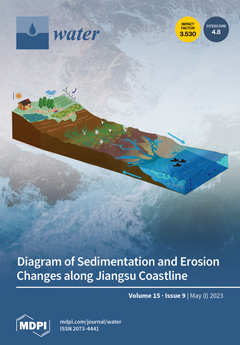Thermokarst lakes in the Western Siberian Lowland (WSL) are major environmental factors controlling organic carbon and trace metal storage in inland waters and greenhouse gas emissions to the atmosphere. In contrast to previously published research devoted to lake hydrochemistry, hydrobiology, sedimentary carbon, and
[...] Read more.
Thermokarst lakes in the Western Siberian Lowland (WSL) are major environmental factors controlling organic carbon and trace metal storage in inland waters and greenhouse gas emissions to the atmosphere. In contrast to previously published research devoted to lake hydrochemistry, hydrobiology, sedimentary carbon, and processes controlling the lake total dissolved (<0.45 μm) solute composition, the colloidal forms of organic carbon (ОC), and related elements remain poorly known, especially across the permafrost gradient in this environmentally important region. Here we sampled 38 thermokarst lakes in the WSL, from the continuous to the permafrost-free zone, and we assessed both the total (<0.45 μm) and low-molecular-weight (<1 kDa) concentrations of 50 major and trace elements using conventional filtration and in situ dialysis. We aimed at quantifying the relationships between the colloidal content of an element and the lake surface area, permafrost coverage (absent, sporadic, isolated, discontinuous, and continuous), pH, and the concentrations of the main colloidal constituents, such as OC, Fe, and Al. There was a positive correlation between the lake area and the contents of the colloidal fractions of DOC, Ni, rare earth elements (REE), and Hf, which could be due to the enhanced mobilization of OC, trace metals, and lithogenic elements from silicate minerals in the soil porewater within the lake watershed and peat abrasion at the lake border. In all permafrost zones, the colloidal fractions of alkalis and alkaline-earth metals decreased with an increase in lake size, probably due to a decrease in the DOC concentration in large lakes. There was an increase in the colloidal fractions of DOC, Fe, Al, trivalent and tetravalent trace cations, Mn, Co, Ni, As, V, and U from the southern, permafrost-free zone to the northern, permafrost-bearing zones. This observation could be explained by an enhanced feeding of thermokarst lakes by suprapermafrost flow and the thawing of dispersed peat ice in the northern regions. Considering the large permafrost gradient of thermokarst lakes sampled in the present study, and applying a space-for-time substitution approach, we do not anticipate sizable changes in the colloidal status of DOC or major or trace elements upon climate warming and the permafrost boundary shifting northwards. For incorporating the obtained results into global biogeochemical models of OC, metal micronutrients, and toxicant migration in the permafrost regions, one has to consider the connectivity among lakes, soil waters, and rivers. For this, measurements of lake colloids across the main hydrological seasons, notably the winter period, are necessary.
Full article





